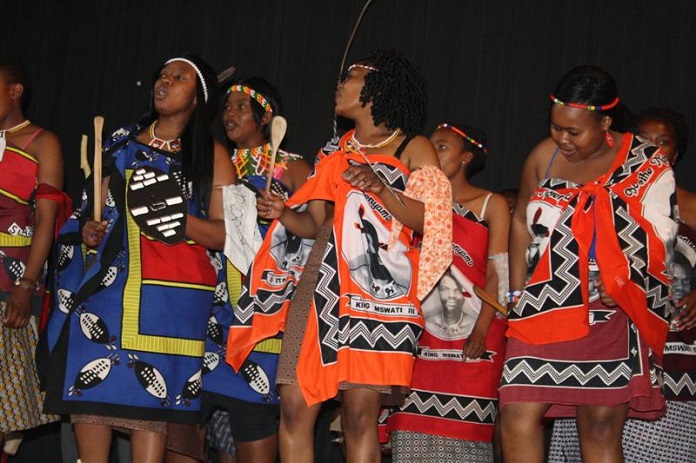Swati Traditional Attire: A Rich Tapestry of Culture and Heritage
Swati traditional attire is a beautiful reflection of the Swati people’s vibrant culture, values, and history. Swaziland (now Eswatini), where the Swati people originate, is known for its deep-rooted traditions, and the clothing worn during ceremonies and everyday life reflects the pride and identity of its people.
The Importance of Swati Traditional Attire
The Swati traditional attire holds significant cultural and social meaning. It’s not just clothing; it is a symbol of one’s identity, community, and respect for ancestors. Various garments are worn on different occasions, from cultural ceremonies to weddings and national events, each carrying its unique symbolism and significance.
Key Components of Swati Traditional Attire
Swati attire is distinct for both men and women, and it varies depending on the occasion. Here’s a breakdown of the key components:
1. Emahiya
Emahiya are colorful, intricately patterned cloths worn by Swati women. These wraps are draped over the shoulders and tied around the waist. The emahiya are traditionally adorned during special ceremonies, including Umhlanga (the Reed Dance) and marriage rituals. Women often accessorize with beadwork and necklaces that complement their attire, enhancing the vibrant look.
2. Ligwalagwala
The ligwalagwala is a feathered headpiece typically worn by men during cultural events. It signifies power and authority and is worn with other traditional garments during ceremonies like the Incwala. This headpiece is made from bird feathers, with the feathers of the purple-crested turaco, a bird considered sacred in Swati culture, being the most revered.
3. Sidvwashi
The sidvwashi is another key element for Swati men. This loincloth is worn by men during traditional ceremonies and is paired with animal skins and other adornments, such as beadwork and shields, during festivals or warrior performances.
4. Umhelwane
This garment, made from cowhide or other animal skins, is typically worn by men, especially during royal ceremonies and hunting events. The use of animal skins in Swati attire highlights the people’s connection to nature and their resourceful use of materials from their environment.
Swati Attire and Ceremonial Events
Swati traditional attire is most prominently displayed during national ceremonies, which play a crucial role in keeping the culture alive. These ceremonies offer an opportunity for the Swati people to honor their ancestors, celebrate their heritage, and connect with younger generations.
1. Umhlanga – The Reed Dance
One of the most famous Swati ceremonies is Umhlanga, or the Reed Dance, a week-long cultural event where young women, dressed in their emahiya and beadwork, present reeds to the Queen Mother. The attire worn during this event is symbolic of purity and is a celebration of womanhood, family, and unity.
2. Incwala – The First Fruits Ceremony
The Incwala ceremony is another significant cultural event where men and boys come together to wear traditional regalia, including the ligwalagwala and sidvwashi, and celebrate the king’s leadership. This ceremony also emphasizes the respect the Swati people have for their king, land, and harvest.
The Evolution of Swati Attire in Modern Times
While Swati traditional attire has maintained its cultural significance, there has also been a blend of modern influences. Today, it is common to see Swati designs being incorporated into everyday wear, showcasing a fusion of tradition and modern fashion. Fashion designers have also embraced Swati patterns and beadwork, creating garments that celebrate the Swati heritage while catering to contemporary tastes.
Where to Find Authentic Swati Traditional Attire
If you are looking to explore or purchase authentic Swati traditional attire, there are many outlets in Eswatini and online. Local markets and cultural centers in Eswatini are the best places to find these garments, where each piece is handmade and tells a story of the culture.
For those not in the region, websites like Traditional Attire offer insights and access to Swati garments, ensuring you can connect with this rich cultural heritage from anywhere.
Swati traditional attire is more than just clothing; it is a symbol of identity, pride, and culture that has been passed down through generations. From the colorful emahiya to the royal ligwalagwala, each garment and accessory has a special place in Swati culture, particularly during ceremonial events. Whether you’re looking to learn more or don traditional Swati attire yourself, this vibrant cultural expression continues to inspire people both within Eswatini and beyond.
For more information on Swati attire and to explore a range of traditional clothing, visit Traditional Attire, where you can find authentic Swati garments. To learn more about Swati culture and heritage, the Eswatini National Museum and other cultural institutions offer valuable resources.

Leave a Reply